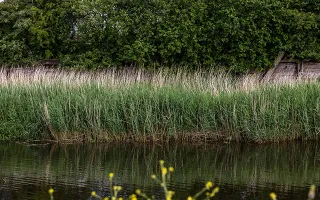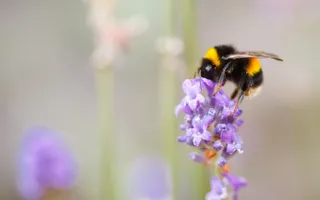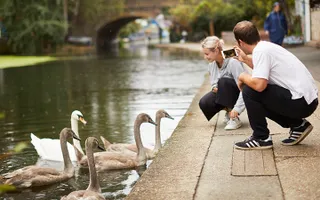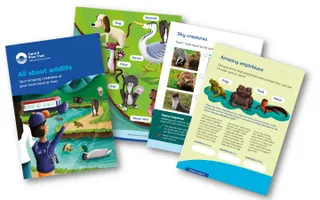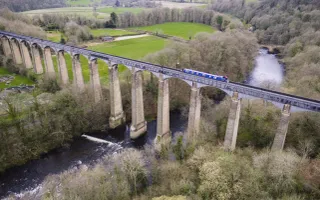It’s amazing, isn’t it? You can be in the heart of any city and you can find absolute gems. I mean I’m not sure everyone will call this a gem, but I get very excited by it.
It’s brilliant, isn’t it? If it weren’t for this really modern bridge being here to protect this otter spraint, the droppings the otters have left behind, we wouldn’t know that they were coming this far into the city centre at all.
Yeah, I mean otters are secretive mammals anyway. You know, they’re hard to see in the heart of the countryside, let alone in a city where they are going to be probably a little bit more timid. But it’s evidence like this that allows us to get better ideas of their populations. And, you know, it proves how important these waterways are. I mean we’ve got the swans, and the Canada geese and the mallards behind, but to have an otter, it blows my mind. It’s incredibly exciting.
We’ve got some little fish bones here and some little fish scales. And if you’re feeling brave, you can get a stick and have a little bit of a poke, and it smells beautiful to me.
Beautiful?
Yeah, I really love that smell. I’m sorry, whenever I come across otter spraint, I’m going to sniff it.
I mean, I always sniff it as well because I think when you come across any animal excrement or whatever, you have to give it a sniff. You’re not a naturalist if you don’t sniff a lot of poo.
Have to say, one of my favourite things is spring – and there are many things that I get really excited about when it comes back around again – is that kind of arrival of the wildflowers back as they come out and just kind of explode like fireworks. And they’re really exciting to see, and they really do liven up our cities as well, I think.
We’ve been a little bit early for it today. Spring hasn’t quite spring just yet.
We’re getting there.
We’re nearly there, we’re nearly there. The sun’s been out today. But we have seen some lesser celandine. That beautiful yellow colour that’s one of the earliest species to emerge. So important for pollinators. And at the Canal & River Trust, we do try and allow some of our grasses to grow a little bit longer to allow those flowers to bloom and provide that incredibly important food source for the pollinators, which obviously then, in turn, are a brilliant food source for the birds and for the bats. And all of those species coming into the cities along with our canals, it’s just a really important habitat.
And it looks beautiful at the same time. So there’s really not a downside just to letting the grass grow a little bit wilder, as you say, and letting those gorgeous flowers, you know, the oxeye daisy and then the poppies, it’s stunning, you know, just giving it chance to breathe and do its job. And you know, pollinators need all the help they can get.
Yeah, definitely. Along the canals, some of the sorts of species that we get are things like yellow flag iris and purple loosestrife and meadowsweet, which are just such beautiful colours, and they’re absolutely buzzing with life in the early spring. Not quite today, but soon enough those flowers are going to be ready for the insects to come along and buzz along, making sure that all of the flowers are pollinated and providing that food source for birds and bats, as well, of course.
Yeah, I’d be more inclined to come if there are wildflowers all over the place, which there are. It makes, you know, these environments that much more attractive when we let that happen.
I think so, I think so, too.


